Are you a Formula 1 fan who wants to attend one of the most thrilling and historic races on the calendar? Do you want to experience the passion and excitement of the Brazilian GP at Interlagos? Do you want to know everything about the circuit, the tickets, the accommodation, the transportation, and the activities in São Paulo? If you answered yes to any of these questions, then this guide is for you!
The Brazilian GP, also known as the São Paulo Grand Prix, is a Formula 1 championship race that takes place at the Autodromo Jose Carlos Pace in Interlagos, a suburb of São Paulo, Brazil. The race has been part of the F1 calendar since 1973, and has witnessed some of the most memorable moments and battles in F1 history. The circuit is famous for its challenging layout, its unpredictable weather, and its passionate and noisy fans.
In this guide, you will find everything you need to know to plan your trip to the Brazilian GP 2023, which is scheduled for November 5th.
By reading this guide, you will be able to make the most of your F1 adventure in Brazil. You will be able to watch the best drivers in the world compete on one of the most challenging and exciting circuits in F1 history.
Visitors can explore São Paulo, a vibrant and diverse metropolis that offers a rich cultural, artistic, and gastronomic scene. You will have an unforgettable experience that you will cherish for a lifetime.
So, are you ready to start your journey? Let’s begin!
Index To Article on the Brazilian GP 2023
- When Is the Brazilian GP?
- The History of the Brazilian GP
- Which F1 Teams Will be in The Brazilian GP?
- Brazilian GP Layout
- Where To Watch the Brazilian GP
- Brazilian GP Entrance Tickets
- How To Get to the Brazilian GP
- Accommodation Options
- Other Activities to Enjoy
Brazilian GP Schedule – When Is the Brazilian GP?
The 2023 Brazilian Grand Prix is being run between the 3rd and 5th of November 2023.
| 5th November |
| Brazilian GP time |
| 19:00 |
| 4th November |
| Brazilian GP Sprint Race Time |
| 20:30 – 21:30 |
| 4th November |
| Sprint Shootout |
| 16:00 – 16:44 |
| 3rd November |
| Brazilian GP Qualifying Time |
| 20:00 – 21:00 |
| 3rd November |
| Practice 1 |
| 16:30 – 17:30 |
The History of the Brazilian GP
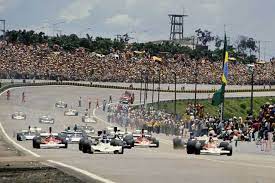
The Brazilian Grand Prix is one of the most exciting and historic races on the Formula One calendar. It has been held since 1972, alternating between two iconic circuits: Interlagos and Jacarepaguá.
The race has witnessed many memorable moments, such as the first wins of local heroes including.
- Emerson Fittipaldi
- Carlos Pace
- Nelson Piquet
- Ayrton Senna
- Felipe Massa
Origins of the Brazilian GP
The origins of Brazilian Grand Prix racing go back to the 1930s. Construction of the Autodromo de Interlagos finished in the decade for a 1940 opening. Situated near Sao Paulo, it would host numerous events and types of race meetings.
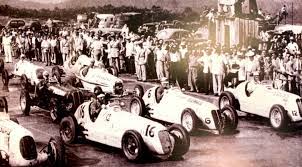
The circuit was inspired by the Roosevelt Raceway in the United States and had a challenging layout with many elevation changes, fast corners and a rough surface.
In 1934, the first street race was held in Rio de Janeiro, on the Circuito da Gávea. This circuit was also known as the “Trampolim do Diabo” (Devil’s Trampoline) because of its dangerous curves and jumps.
The race attracted many international drivers and was part of the European Grand Prix Championship until 1939.
Brazil held Grands Prix during the early parts of WWII at Interlagos and Gavea, but it was not until 1972 that a Brazilian Grand Prix was held as part of the Formula One World Championship.
This race was done as a test to convince the FIA if the Interlagos circuit and its organizers could capably hold a Grand Prix. The race was won by Emerson Fittipaldi, who became the first Brazilian to win his home race.
Interlagos and Jacarepaguá
The following year, the Brazilian Grand Prix was officially included in the F1 calendar. It was won again by Fittipaldi who defended his world title that year.
In 1975, another Sao Paulo native, Carlos Pace, won the race in his Brabham, followed by Fittipaldi.
Pace would later have the circuit named after him in his honor, after he died in a plane crash in 1977.
However, by 1977, the drivers began complaining about Interlagos’s very rough surface and poor facilities. The event was then relocated for a year to the new Jacarepaguá circuit in Rio de Janeiro.
This circuit was built on a swampy area near a lagoon and had a flat and smooth layout. The race was won by Carlos Reutemann in a Ferrari.
The original arrangement from 1978 onwards was to alternate the Brazilian Grand Prix between Sao Paulo and Rio circuits; however, parts of Jacarepaguá were beginning to sink into the soft ground and the circuit disintegrated badly.
This resulted in the 1980 race being relocated to Interlagos again. The race was won by Rene Arnoux in a Renault.
The Brazil GP returned to Jacarepaguá
In 1981, Jacarepaguá was ready to host the race again, and this time it coincided with the rise of another Brazilian star: Nelson Piquet.
Piquet, who was from Rio de Janeiro, won his first home race that year, beating Reutemann by a narrow margin. He would repeat his victory in 1983 and 1986, becoming a three-time world champion in the process.
Jacarepaguá would host the Brazilian Grand Prix until 1989, witnessing many memorable races and moments. Some of them include:
- The first win of Alain Prost in 1982, who would go on to win six times in Brazil (five times in Rio), more than any other driver.
- The first win of Ayrton Senna in 1988, who had moved to McLaren that year and dominated the season with Prost as his teammate.
- The first win of Nigel Mansell in 1989, who had switched to Ferrari and beat his former teammate Piquet in a close fight.
Return to Interlagos

After an approximately $15 million renovation, Formula One returned to Interlagos in 1990. The circuit had been shortened from 7.96 km to 4.31 km and had improved safety features and facilities. The race was won by Alain Prost, who had joined Ferrari and was fighting with Senna for the title.
Interlagos has remained the home of the Brazilian Grand Prix ever since, becoming one of the most popular and challenging circuits on the calendar. The race is usually held at the end of the season, which adds to the drama and excitement.
Highlights of this Era
Some of the highlights of the Interlagos era include:
- The first Ayrton Senna’s titles in 1991, who won the race despite having a gearbox problem and suffering from cramps.
- The first title of Michael Schumacher in 1994, who finished second behind Damon Hill in a controversial season marred by Senna’s death.
- The first title of Fernando Alonso in 2005, who became the youngest world champion at the time.
- The first win of Felipe Massa in 2006, who became the first Brazilian to win at Interlagos since Senna and dedicated his victory to his idol.
- The first title of Kimi Raikkonen in 2007, who snatched the championship from Lewis Hamilton and Alonso by winning the race in a dramatic finale.
- The first title of Lewis Hamilton in 2008.
- The first win of Sebastian Vettel in 2010, who led a Red Bull one-two ahead of Webber and secured his first title by beating Alonso and Hamilton.
- The first win of Max Verstappen in 2016, who produced a stunning drive from 16th to third in the final 16 laps, overtaking several cars on a wet track.
- The first win of Pierre Gasly in 2019.
Which F1 Teams Will be in The Brazilian GP?
All ten of the F1 teams will be present in Brazilian GP. Everyone expects Max Verstappen to continue his dominance during the event at the Brazilian GP.
Most teams have already waved the white flag at Red Bull and now are concentrating on the race that really matters to them. That means they are concentrating on their pier teams that have similar results.
This means that the newly fired up Mercedes F1 team is focusing on competing with Aston Martin, Ferrari and McLaren (who’s upgrades seem to be adding new life to the car.)
Although after a series of own goals in 2023 Ferrari is beginning to look like it belongs at the middle of the pack. Of course, its’ great performance in the Austrian GP may indicate that it could return to the front of the pack.
Behind them we are seeing a fantastic battle developing between Alpine and Alpha Tauri (possible Alfa Romeo as well).
Alex Albon and the Williams Team seem to be becoming more competitive. (time will tell.)
And then there is Haas who is the weakest team so far this year.
The Brazilian GP – Autodromo Jose Carlos Pace Layout
Read our in-depth description of the Interlagos layout.
Where To Watch the Brazilian GP

The circuit also has several grandstands that offer different views and experiences for the spectators. In this chapter, we will describe all of the grandstands at the Autodromo Jose Carlos Pace and list the pros and cons of each one. We will also recommend the best grandstand for watching the race.
Interlagos Grandstand A

Grandstand A is located on the banked entry to the start-finish straight, opposite the pit lane. It is one of the largest and most popular grandstands at the circuit, with a capacity of 15,000 seats.
It offers a double whammy of views, allowing you to see the cars winding through the infield section and then passing underneath you. You can also see the pit stops, the start and finish of the race, and the podium ceremony.
Pros Of Interlagos Grandstand A
- Great view of the infield section and the start-finish straight
- Close to the pit lane and the podium
- High chance of overtaking and action
- Good atmosphere and noise
Cons Interlagos Grandstand A
- Expensive tickets
- Far from other parts of the circuit
- Can be crowded and hot
Interlagos Grandstand B
Grandstand B is located on the outside of Turn 1, also known as the Senna S. It is a smaller grandstand with a capacity of 4,000 seats.
It offers a good view of one of the best overtaking spots on the track, as well as Turn 2 and part of Turn 3. You can also see the cars braking hard from over 300 km/h (186 mph) to around 100 km/h (62 mph) for Turn 1.
Pros Of Interlagos Grandstand B
- Good view of Turn 1 and Turn 2
- High chance of overtaking and action
- Close to Turn 3 and part of Turn 4
Cons Of Interlagos Grandstand B
- Limited view of other parts of the circuit
- Can be noisy and dusty
- No access to other grandstands
Interlagos Grandstand M
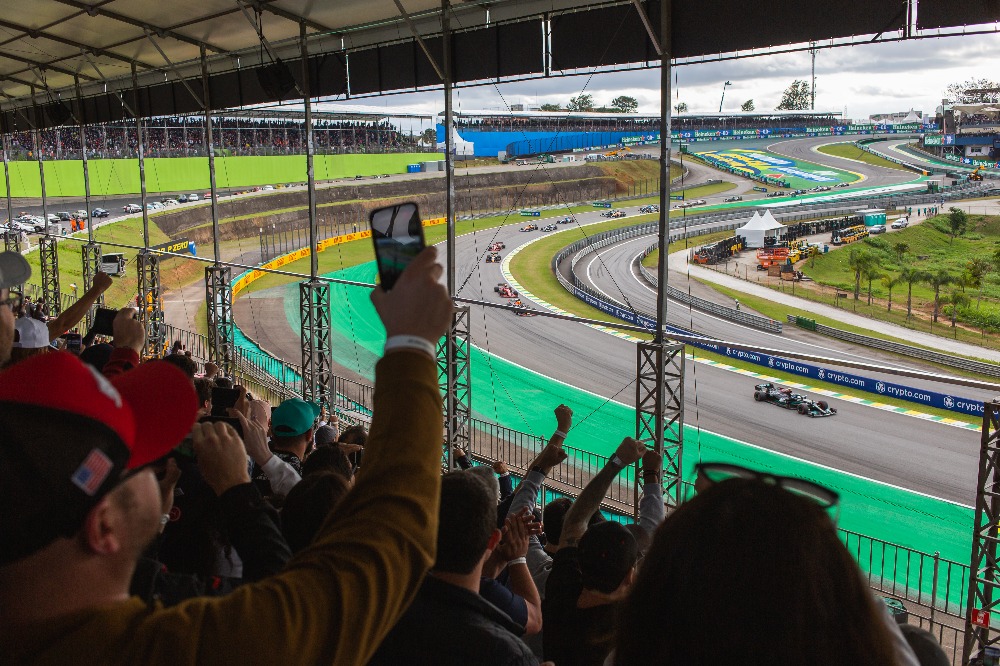
Grandstand M is located on the inside of Turn 1, also known as the Senna S. It is a medium-sized grandstand with a capacity of 6,000 seats.
It offers a similar view to Grandstand B, but from a different angle. You can also see Turn 2 and part of Turn 3.
You can also see the cars accelerating hard out of Turn 2 for Turn 3.
Pros Of Interlagos Grandstand M
- Good view of Turn 1 and Turn 2
- High chance of overtaking and action
- Close to Turn 3 and part of Turn 4
Cons Of Interlagos Grandstand B
- Limited view of other parts of the circuit
- Can be noisy and dusty
- No access to other grandstands
Interlagos Grandstand D
Grandstand D is located on the outside of Turn 4, also known as Descida do Lago. It is a small grandstand with a capacity of 2,000 seats.
It offers a good view of another overtaking spot on the track, as well as part of Turn 5. You can also see the cars braking from over 320 km/h (199 mph) to around 140 km/h (87 mph) for Turn 4.
Pros Of Interlagos Grandstand D
- Good view of Turn 4 and part of Turn 5
- High chance of overtaking and action
- Close to part of Turn 6
Cons Of Interlagos Grandstand D
- Limited view of other parts of the circuit
- Can be noisy and windy
- No access to other grandstands
Interlagos Grandstand E
Grandstand E is located on the outside of Turn 8, also known as Curva da Junção. It is a small grandstand with a capacity of 2,000 seats.
It offers a good view of one of the most important corners on the track, as well as part of Turn 9. You can also see the cars accelerating hard out of Turn 8 for Turn 9.
Pros Of Interlagos Grandstand D
- Good view of Turn 8 and part of Turn 9
- High chance of action and drama
- Close to part of Turn 10
Cons Of Interlagos Grandstand D
- Limited view of other parts of the circuit
- Can be noisy and hot
- No access to other grandstands
Interlagos Grandstand F

Grandstand F is located on the outside of Turn 10, also known as Curva do Café. It is a small grandstand with a capacity of 2,000 seats.
It offers a good view of the last corner on the track, as well as part of Turn 9.
You can also see the cars accelerating hard out of Turn 10 for the start-finish straight.
Pros Of Interlagos Grandstand F
- Good view of Turn 10 and part of Turn 9
- High chance of action and drama
- Close to part of Turn 1
Cons Of Interlagos Grandstand F
- Limited view of other parts of the circuit
- Can be noisy and hot
- No access to other grandstands
Recommendation
Based on the pros and cons of each grandstand, we recommend Grandstand A as the best grandstand for watching the race.
It offers the most comprehensive and diverse view of the circuit, as well as the most atmosphere and excitement. It is also close to the pit lane and the podium, which adds to the experience.
However, it is also the most expensive and crowded grandstand, so you may want to book your tickets early and arrive early on race day.
If you are looking for a cheaper and less crowded option, you may want to consider Grandstand B or Grandstand M. It offers good views of Turn 1 and Turn 2, where most of the overtaking happens.
You may also want to consider Grandstand D or Grandstand E, which offer good views of Turn 4 and Turn 8. These are some of the most important corners.
However, these grandstands have limited views of other parts of the circuit and no access to other grandstands.
Brazilian GP Entrance Tickets
Are you interested in buying tickets for the Brazilian GP?
If so, you have several options to choose from, depending on your budget and preference.
You can buy tickets online from the official F1.Com website or from other authorized retailers. You can also buy tickets from resellers or other fans but be careful of scams and frauds.
There are different types of tickets available for the Brazilian GP, such as
- General Admission
- Grandstand Seats
- Hospitality Packages
- Camping Passes
The prices vary depending on the type of ticket, the location of the seat and the day of the event.
The tickets usually go on sale several months before the Grand Prix. They tend to sell out fast, especially for popular grandstands and days. Therefore, it is advisable to book your tickets early and compare prices.
Some of the benefits of buying tickets for the Brazilian GP are:
- You can enjoy the thrill and excitement of watching live motorsport. It is one of the most iconic and historic circuits in the world.
- You can witness some of the best drivers and teams in F1 compete for glory.
- You can explore the circuit and its facilities. These include the fan zone, the merchandise stalls, the food and drink outlets and the entertainment shows. Interlagos organizes these during the Grand Prix weekend, such as pit walks, autograph sessions, concerts and parties.
For the Circuit of the Brazilian GP, you can use this advertisement query to find some options:
“Brazilian Grand Prix Tickets”, “Brazilian GP 2023 Tickets” or “Interlagos 2023 F1 tickets“
Don’t miss this chance to book your tickets now!
How To Get to the Brazilian GP 2023
Every year, thousands of passionate fans flock to the Autodromo Jose Carlos Pace, better known as Interlagos, to witness the high-speed action and drama on the track.
If you are planning to join them in 2023, here are some tips on how to get to the Brazilian GP.
Travel To the Brazilian GP by Air

The easiest way to get to São Paulo, the largest city in Brazil and South America, is by flying. The city has two major airports:
- Guarulhos International Airport (GRU)
- Congonhas Airport (CGH).
GRU is the main international hub, serving flights from all over the world, while CGH is mainly used for domestic and regional flights.
Depending on where you are flying from, you may need to book a connecting flight via another city in Brazil or abroad.
You can check the availability and prices of flights to São Paulo on various online platforms, such as Skyscanner or Expedia.
Once you arrive at GRU or CGH, you can take a taxi, bus, or metro to get to your accommodation or the circuit.
The distance between GRU and Interlagos is about 50 km, while the distance between CGH and Interlagos is about 15 km. The travel time and cost will vary depending on the traffic and mode of transportation.
Travel To the Brazilian GP by Road
If you prefer to drive or rent a car, you can also reach São Paulo by road. The city is connected by several highways to other major cities in Brazil, such as Rio de Janeiro, Belo Horizonte, Curitiba, and Brasilia.
However, be prepared for long distances, tolls, and heavy traffic.
The circuit is located in the south of São Paulo, in the district of Interlagos. You can access it via the Marginal Pinheiros expressway or the Avenida Interlagos.
There are several parking lots around the circuit, but they tend to fill up quickly and charge high fees. You may want to book your parking spot in advance or use public transportation instead.
Travel To the Brazilian GP by Public Transportation

Public transportation is a convenient and affordable option to get to the Brazilian GP.
São Paulo has an extensive network of buses, metro, and trains that can take you to different parts of the city and the circuit.
The closest metro station to Interlagos is Autodromo (Line 9), which is about 4 km away from the circuit entrance. You can walk or take a shuttle bus from there. Alternatively, you can take a train to Jurubatuba (Line 9) or Grajau (Line 10).
They are within walking distance or shuttle bus range from the circuit.
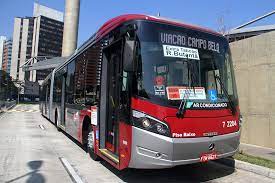
You can also take a bus from various points in the city to Interlagos. Some of the bus lines that serve the area are
- 675I/10 (Metrô Jabaquara – Terminal Grajau)
- 675R/10 (Metrô Jabaquara – Terminal Santo Amaro)
- 609J/10 (Terminal João Dias – Terminal Grajau)
- 607G/10 (Terminal Santo Amaro – Terminal Grajau).
You can check the routes, schedules, and fares of public transportation on SPTrans or CPTM.
Travel To the Brazilian GP by Bike

If you are feeling adventurous and eco-friendly, you can also cycle to Interlagos. São Paulo has several bike lanes and paths that connect different parts of the city. You can use your own bike or rent one from a bike-sharing service, such as Bike Sampa or Yellow.
The circuit has a bike parking area near Gate G, where you can leave your bike securely during the race weekend. However, be aware that cycling in São Paulo can be challenging due to the traffic, hills, and weather conditions.
Accommodation Options for the Brazilian GP
São Paulo offers many accommodation options for F1 fans who want to attend the Brazilian GP 2023. You can find something that suits your budget, preference, and location.
However, make sure you book your accommodation in advance, as rooms tend to sell out quickly during the race weekend.
Here are some tips on how to choose the best accommodation option for the Brazilian GP.
Factors to Consider
When looking for accommodation in São Paulo, there are several factors to consider, such as:
Your Budget for the Brazilian GP
São Paulo has a wide range of accommodation options, from cheap hostels and guesthouses to mid-range hotels and luxury resorts.
You can find something to suit your budget but be prepared to pay more during the race weekend. Prices tend to increase due to high demand.
You can compare prices and availability on various online platforms, such as Booking.com or Expedia.
The Proximity the Brazilian GP
São Paulo is a huge and sprawling city, with different neighborhoods offering different attractions and amenities.
The circuit is located in the south of the city, in the suburb of Interlagos, which is not very touristic or convenient for sightseeing. Therefore, most fans prefer to stay in the city center or nearby areas. In these areas they can enjoy more of what São Paulo has to offer, but still get to the track easily by public transportation or car.
Some of the recommended neighborhoods are
- Morumbi
- Jardins
- Paulista Avenue
- Campo Belo
- Pinheiros.
Transportation to the Brazilian GP
Getting around São Paulo can be challenging due to the traffic, distance, and safety issues.
The best way to get to the circuit is by public transportation, which is cheap and reliable.
São Paulo has an extensive network of buses, metro, and trains that can take you to different parts of the city and the circuit. The closest metro station to Interlagos is Autodromo (Line 9), which is about 4 km away from the circuit entrance.
You can walk or take a shuttle bus from there. Alternatively, you can take a taxi or rent a car, but be prepared for long travel times and high costs.
Recommended Accommodation Options
Based on these factors, here are some of the best accommodation options for the Brazilian GP:
F1 Ticket + Hotel + Transfer Packages
If you want to enjoy a hassle-free and comfortable stay in São Paulo, you can book an official F1 Ticket + Hotel + Transfer package from F1 Experiences.
These packages pair the best grandstand seating with hotel accommodation and transportation. You can choose from boutique trackside hotels to luxury city center locations. They also include convenient transportation to and from the circuit during your race weekend.
Grand Hyatt São Paulo
If you want to splurge on a five-star hotel in São Paulo, he Grand Hyatt São Paulo, is located in the Morumbí/Brooklin commercial district.
This hotel offers spacious rooms with modern amenities, a rooftop pool, a spa, a fitness center, and several restaurants and bars. It is also where most of the F1 teams and drivers stay during the race weekend.
Estanplaza International
If you are looking for a more affordable option in the same area as the Grand Hyatt São Paulo, you can try the Estanplaza International.
This is a four-star hotel with cozy rooms, a rooftop pool, a gym, and an on-site bar and restaurant.
Ibis Budget São Paulo Paulista
If you are traveling on a tight budget, you can opt for the Ibis Budget São Paulo Paulista. This is a two-star hotel with basic but clean rooms, free Wi-Fi, and breakfast included.
It is located on Paulista Avenue, close to a metro station and many shops and restaurants.
Other Activities to Enjoy While You Visit the Brazilian GP
The Brazilian GP is not only a great opportunity to watch the best drivers in the world compete on one of the most challenging and historic circuits in Formula 1, but also a chance to explore São Paulo, the largest city in Brazil and South America. São Paulo is a vibrant and diverse metropolis, with a rich cultural, artistic, and gastronomic scene. Whether you are looking for museums, parks, markets, nightlife, or cuisine, you will find something to suit your taste and interest in this city. Here are some of the best activities to enjoy while you visit the Brazilian GP.
Visit the Pinacoteca do Estado de São Paulo
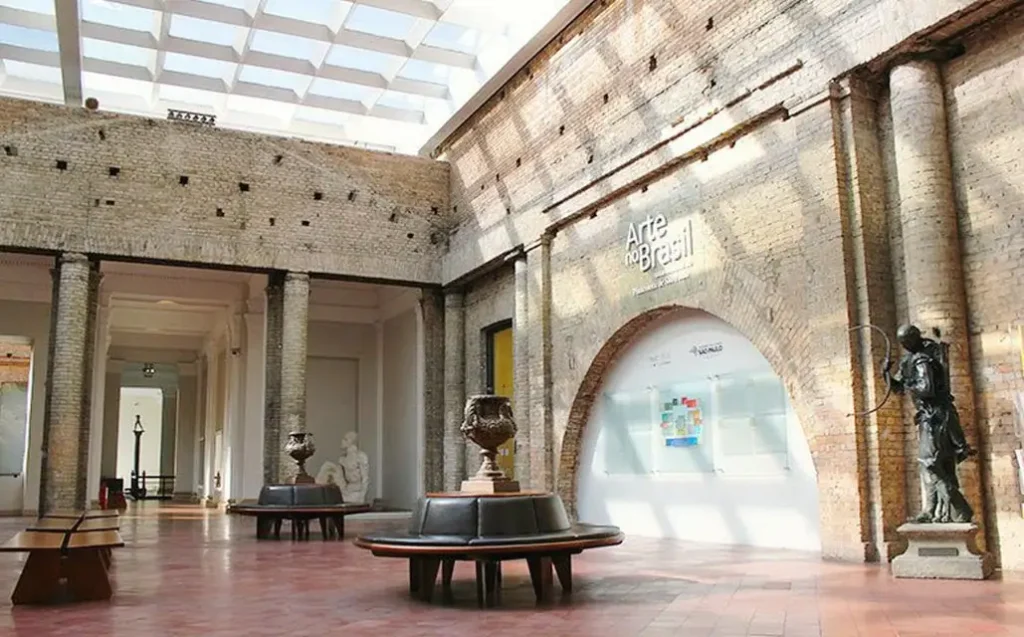
The Pinacoteca do Estado de São Paulo is one of the most important art museums in Brazil. It features a collection of more than 10,000 works of Brazilian art from the 19th century to the present day.
The museum is housed in a beautiful neoclassical building that was originally designed as an art school in 1897. It also hosts temporary exhibitions, concerts, workshops, and educational programs.
You can admire paintings, sculptures, drawings, prints, photographs, and installations by artists such as
- Candido Portinari
- Tarsila do Amaral
- Anita Malfatti
- Lasar Segall
- and many others.
Explore the Mosteiro de Sao Bento
The Mosteiro de Sao Bento is a Benedictine monastery that dates back to 1598. It is located in the heart of São Paulo’s historic center, near the Praça da Sé.
The monastery is famous for its impressive baroque architecture and its richly decorated church, which features paintings, sculptures, stained glass windows, and a magnificent organ. It also has a bakery that sells delicious breads, cakes, jams, and honey made by the monks.
You can visit the monastery daily and attend the Gregorian chants that take place every morning and on Sundays.
Enjoy the Gastronomy of São Paulo
São Paulo is a gastronomic paradise, offering a variety of cuisines from different regions of Brazil and the world.
You can find anything from traditional feijoada (a stew of beans, pork, and beef) and churrasco (grilled meat) to sushi, pizza, pasta, falafel, and more. Some of the best places to eat in São Paulo are:
Mercado Municipal

This is a huge market that sells fresh fruits, vegetables, meats, cheeses, spices, and other products. You can also find stalls that serve sandwiches, pastries, juices, and other snacks.
Don’t miss the famous mortadella sandwich or the pastel de bacalhau (codfish pastry).
Vila Madalena

This is a bohemian neighborhood that has many bars, restaurants, cafes, and art galleries. You can find a variety of cuisines here, from Brazilian to Italian to Middle Eastern.
You can also enjoy live music and street art.
Liberdade

This is the largest Japanese community outside Japan. You can find many restaurants that serve sushi, sashimi, ramen, tempura, yakisoba, and other Japanese dishes.
You can also visit the Oriental Garden and the Museum of Japanese Immigration.
Experience the Nightlife of São Paulo
São Paulo is a city that never sleeps, with a vibrant and diverse nightlife scene. You can find bars, clubs, pubs, theaters, cinemas, and concerts for all tastes and budgets.
Some of the best places to enjoy the nightlife of São Paulo are:
Rua Augusta

This is a street that has many bars, clubs, and restaurants that cater to different crowds and genres. You can find rock, pop, hip hop, electronic, samba, and more. You can also find alternative and LGBT venues.
Vila Olimpia
This is a trendy neighborhood that has many upscale bars, clubs, and restaurants. You can find live music, DJs, karaoke, comedy shows, and more. You can also find some of the best nightclubs in São Paulo, such as D-Edge, The Week, and Disco.
Centro Cultural São Paulo

This is a cultural center that hosts various events and activities throughout the year. You can find theater, dance, music, cinema, literature, and more. You can also visit the library, the art gallery, and the garden.
Conclusion
São Paulo is a city that has a lot to offer to F1 fans who want to attend the Brazilian GP 2023. You can find accommodation options for all budgets and preferences, as well as activities for all tastes and interests.
There are museums, monuments, parks, markets, restaurants, bars, clubs, and more. You can also experience the culture, history, and diversity of this city.
The Brazilian GP 2023 will take place on November 5th at Interlagos, one of the most iconic and exciting circuits in Formula 1 history. Don’t miss this opportunity to experience the thrill of F1 racing in Brazil.

